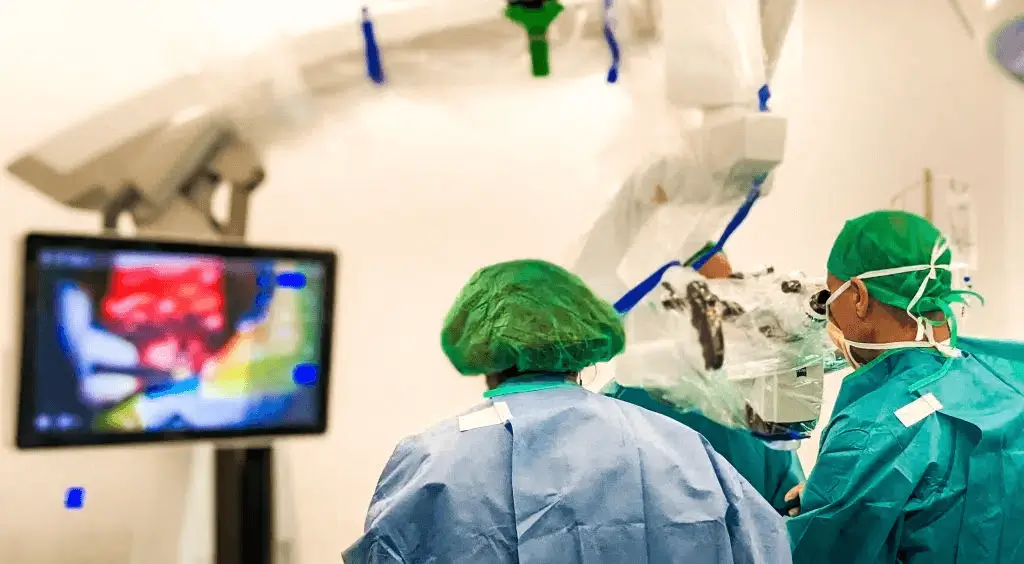Cervicothoracic Deformity Correction: Everything You Need to Know
What Is a Cervicothoracic Deformity?
A cervicothoracic deformity refers to an abnormal alignment between the cervical spine (neck) and the thoracic spine (upper back). This region, known as the cervicothoracic junction, is a complex area where numerous neurological, vascular, and skeletal structures converge. Any deviation or malformation in this zone can result in chronic pain, spinal cord compression, and significant functional disability.
These deformities are often associated with conditions such as cervical kyphosis, ankylosing spondylitis, scoliosis, post-surgical deformities, or neuromuscular and rheumatic diseases. Patients may present with a forward head posture, difficulty looking straight ahead, balance issues, radiating pain, and respiratory difficulties.
Causes and Risk Factors
Among the most common causes we find:
- Advanced disc degeneration
- Inflammatory diseases (e.g., ankylosing spondylitis)
- Congenital spinal deformities
- Improperly healed trauma or fractures
- Previous spinal fusion surgeries with poor alignment
- Neuromuscular disorders (e.g., muscular dystrophies, cerebral palsy)
One of the key challenges in treating this area is that the cervicothoracic junction supports a significant range of head and neck movement, requiring surgical precision and deep anatomical knowledge.
Accurate Diagnosis: A Critical Step
Diagnosing a cervicothoracic deformity requires a thorough assessment that includes medical history, physical examination, and advanced imaging tests:
- Dynamic X-rays
- MRI scans
- 3D CT scans
- Flexion/extension studies
At Complex Spine Institute, led by Dr. Vicenç Gilete and Dr. Augusto Covaro, we follow an advanced diagnostic protocol that allows us to pinpoint the exact origin of the deformity and plan surgery with maximum safety. Our team’s experience with complex spine cases is crucial for successfully treating severe deformities or failed previous surgeries.
When Is Cervicothoracic Surgery Indicated?
Surgical intervention is considered when the deformity:
- Causes persistent and disabling pain
- Impairs neurological function (e.g., weakness, difficulty walking)
- Negatively impacts quality of life and daily activities
- Progressively worsens over time
The goal of surgery is to restore spinal alignment, relieve pressure on the spinal cord and nerves, and provide the patient with a stable, functional posture.
Surgical Techniques
The surgical approach depends on the severity of the deformity, underlying causes, and the patient’s overall health. Common techniques include:
- Vertebral osteotomies to restore natural curvature
- Cervicothoracic fusion using screws and rods
- Combined anterior and posterior instrumentation
- Revision surgeries for previously operated cases
As Dr. Gilete explains, “Deciding to fuse is a critical step. Around 50% of cervical flexion/extension occurs at C0-C1-C2, so fusion in this area can significantly reduce mobility.” At Complex Spine Institute, each surgical plan is entirely customized to the patient’s needs.

Postoperative Recovery and Rehabilitation
Recovery after surgery involves:
- Short hospital stay in a specialized unit
- Temporary use of neck braces or orthotic devices
- Progressive physiotherapy tailored to the procedure
- Follow-up care by the same surgical team
Rehabilitation is crucial to restore mobility, reduce stiffness, and prevent complications. The multidisciplinary approach at Complex Spine Institute ensures continuous, coordinated care through every stage of recovery.
Why Choose Complex Spine Institute?
- Over 25 years of experience in complex spinal cases
- Led by renowned experts in neurosurgery and orthopedics: Dr. Gilete and Dr. Covaro
- Use of cutting-edge technology: intraoperative CT, robotic navigation, advanced endoscopy
- Proven success in international patients with previous failed surgeries
If you’re living with a cervicothoracic deformity or have undergone surgery without satisfactory results, don’t hesitate to schedule a consultation. We’re here to help you regain your quality of life.
Schedule a consultation today —no commitment required—and let us assess your case with expertise, empathy, and professionalism.